The blue grosbeak (Passerina caerulea), is a medium-sized North American passerine bird in the cardinal family Cardinalidae. It is mainly migratory, wintering in Central America and breeding in northern Mexico and the southern United States. The male is blue with two brown wing bars. The female is mainly brown with scattered blue feathers on the upperparts and two brown wing bars.
Taxonomy
The blue grosbeak was formally described by the Swedish naturalist Carl Linnaeus in 1758 in the tenth edition of his Systema Naturae under the binomial name Loxia caerulea.[2] The specific epithet caerulea is the Latin word for "blue", "azure-blue", "sky-blue" or "dark-blue".[3] Linnaeus based his own description on the "blew gross-beak" described and illustrated by Mark Catesby in his The Natural History of Carolina, Florida and the Bahama Islands. The book had been published in 1729–1732.[4] Catesby gave the location as Carolina and Linnaeus specified America. The type location is now restricted to South Carolina.[5]
Some taxonomists placed the blue grosbeak in its own monotypic genus Guiraca but in 2001 a molecular phylogenetic study of mitochondrial DNA sequences found that the blue grosbeak, in spite of being physically larger, nested within the Passerina and was most closely related to the lazuli bunting.[6] The species is therefore now placed with the North American buntings in Passerina, a genus that was introduced by the French ornithologist Louis Pierre Vieillot in 1816.[7][8]
Seven subspecies are recognised:[8]
- P. c. caerulea (Linnaeus, 1758) – southeast and south central USA
- P. c. interfusa (Dwight & Griscom, 1927) – west central USA and north Mexico
- P. c. salicaria (Grinnell, 1911) – southwest USA and northwest Mexico
- P. c. eurhyncha (Coues, 1874) – central and south Mexico
- P. c. chiapensis (Nelson, 1898) – south Mexico to Guatemala
- P. c. deltarhyncha (Van Rossem, 1938) – west Mexico
- P. c. lazula (Lesson, R, 1842) – south Guatemala to northwest Costa Rica
Description
The male blue grosbeak is deep blue, with both black and brown on its wings. The female is mostly brown. Both sexes are distinguished by their large, deep bill and double wing bars. These features, as well as the grosbeak's relatively larger size, distinguish this species from the indigo bunting. Length can range from 14 to 19 cm (5.5 to 7.5 in) and wingspan is from 26 to 29 cm (10 to 11 in).[9][10] Body mass is typically from 26 to 31.5 g (0.92 to 1.11 oz).[11]
Distribution and habitat
This is a migratory bird, with nesting grounds across most of the southern half of the United States and much of northern Mexico, migrating south to Central America and in very small numbers to northern South America; the southernmost record comes from eastern Ecuador.
This species is found in partly open habitat with scattered trees, riparian woodland, scrub, thickets, cultivated lands, woodland edges, overgrown fields, or hedgerows.
Behaviour and ecology
Breeding
The blue grosbeak nests in a low tree or bush or a tangle of vegetation, usually about 1–2.5 m (3.3–8.2 ft) above ground, often at the edge of an open area.[12]
Feeding
It eats mostly insects, but it will also eat snails, spiders, seeds, grains, and wild fruits. The blue grosbeak forages mainly on the ground.[13]
Gallery
-
Male (upper), female (lower)
-
Blue Grosbeak in Birds of America
-
Immature male with partially blue face and tail
References
- ^ BirdLife International (2018). "Passerina caerulea". IUCN Red List of Threatened Species. 2018: e.T22723939A132170886. doi:10.2305/IUCN.UK.2018-2.RLTS.T22723939A132170886.en. Retrieved 13 November 2021.
- ^ Linnaeus, Carl (1758). Systema Naturae per regna tria naturae, secundum classes, ordines, genera, species, cum characteribus, differentiis, synonymis, locis (in Latin). Vol. 1 (10th ed.). Holmiae (Stockholm): Laurentii Salvii. p. 175.
- ^ Jobling, James A. (2010). The Helm Dictionary of Scientific Bird Names. London: Christopher Helm. p. 82. ISBN 978-1-4081-2501-4.
- ^ Catesby, Mark (1729–1732). The Natural History of Carolina, Florida and the Bahama Islands (in English and French). Vol. 1. London: W. Innys and R. Manby. p. 39, Plate 39.
- ^ Paynter, Raymond A. Jr, ed. (1970). Check-List of Birds of the World. Vol. 13. Cambridge, Massachusetts: Museum of Comparative Zoology. p. 241.
- ^ Klicka, J.; Fry, A.J.; Zink, R.M.; Thompson, C.W. (2001). "A cytochrome-b perspective on Passerina bunting relationships". Auk. 118 (3): 610–623. doi:10.1093/auk/118.3.610.
- ^ Vieillot, Louis Pierre (1816). Analyse d'une Nouvelle Ornithologie Élémentaire (in French). Paris: Deterville/self. p. 30.
- ^ a b Gill, Frank; Donsker, David; Rasmussen, Pamela, eds. (2020). "Cardinals, grosbeaks and (tanager) allies". IOC World Bird List Version 10.2. International Ornithologists' Union. Retrieved 24 September 2020.
- ^ "Blue Grosbeak".
- ^ "eNature: FieldGuides: Species Detail". Archived from the original on 2012-02-22.
- ^ CRC Handbook of Avian Body Masses by John B. Dunning Jr. (Editor). CRC Press (1992), ISBN 978-0849342585.
- ^ Bent, Arthur Cleveland; Austin, Oliver L. Jr. (1968). "Life Histories of North American Cardinals, Grosbeaks, Buntings, Towhees, Finches, Sparrows, and Allies". Bulletin of the United States National Museum. Bulletin of the United States National Museum 237. Part 1 (237). Washington DC: Smithsonian Institution Press: 67–80. doi:10.5479/si.03629236.237.1.
- ^ Lowther, P.E.; Ingold, J.L. (2020). Poole, A.F. (ed.). "Blue Grosbeak (Passerina caerulea), version 1.0". Birds of the World. Ithaca, NY, USA: Cornell Lab of Ornithology. doi:10.2173/bow.blugrb1.01. Retrieved 25 September 2020.
External links
|
Help
|
|
Browse
|
Search
|
There is a page named "Blue Grosbeak" on this wiki
- Passerina caerulea (redirect from Blue Grosbeak)Species: Passerina caerulea (Linnaeus, 1758) Vernacular names English: Blue Grosbeak español: Picogordo azul français: guiraca bleu 日本語: ルリイカル (Note: no...776 bytes (94 words) - 18:17, 6 December 2014
- Creative Commons Attribution-Share Alike 4.0 truetrue English Male blue grosbeak on Governors Island author name string: Rhododendrites URL: https://commons...(484 × 530 (397 KB)) - 17:38, 5 March 2024
- Commons Attribution-Share Alike 4.0 truetrue English Immature male blue grosbeak author name string: Rhododendrites Wikimedia username: Rhododendrites...(1,111 × 1,352 (1.13 MB)) - 03:32, 5 May 2024
- Commons Attribution-Share Alike 4.0 truetrue English Immature male blue grosbeak author name string: Rhododendrites Wikimedia username: Rhododendrites...(1,802 × 1,313 (3.28 MB)) - 03:32, 5 May 2024
- Commons Attribution-Share Alike 4.0 truetrue English Male and female blue grosbeaks on Governors Island author name string: Rhododendrites URL: https://commons...(1,987 × 1,458 (3.19 MB)) - 04:35, 27 July 2024
- DescriptionBlue grosbeak (27244087007).jpg Blue grosbeak Date 12 May 2018, 10:15 Source Blue grosbeak Author Melissa McMasters from Memphis, TN, United...(3,058 × 2,038 (655 KB)) - 12:24, 1 December 2023
- DescriptionBlue Grosbeak (41514199435).jpg Blue Grosbeak Date 28 May 2018, 10:15 Source Blue Grosbeak Author Mike's Birds from Riverside, CA, US...(2,443 × 1,955 (492 KB)) - 07:09, 1 December 2023
- DescriptionBlue grosbeak (50425519166).jpg Blue grosbeak Date 4 September 2020, 15:40 Source Blue grosbeak Author Melissa McMasters from Memphis, TN,...(3,434 × 2,290 (785 KB)) - 00:06, 25 April 2024
- DescriptionBlue grosbeak (50193170723).jpg Blue grosbeak Date 26 July 2020, 09:25 Source Blue grosbeak Author Melissa McMasters from Memphis, TN, United...(3,897 × 2,598 (909 KB)) - 00:06, 25 April 2024
- DescriptionBlue grosbeak (39799407500).jpg Blue grosbeak Date 11 April 2018, 16:37 Source Blue grosbeak Author Melissa McMasters from Memphis, TN, United...(2,674 × 1,783 (357 KB)) - 12:24, 1 December 2023
- org/licenses/by/4.0CC BY 4.0 Creative Commons Attribution 4.0 truetrue English Blue Grosbeak (Passerina caerulea) stated in: iNaturalist reference URL: https://www...(1,008 × 902 (735 KB)) - 06:47, 28 July 2023
- DescriptionBlue grosbeak (47094123364).jpg Blue grosbeak Date 12 May 2019, 13:30 Source Blue grosbeak Author Melissa McMasters from Memphis, TN, United...(5,760 × 3,840 (1.61 MB)) - 08:31, 18 July 2024
- DescriptionBlue grosbeak (50193976087).jpg Blue grosbeak Date 26 July 2020, 09:25 Source Blue grosbeak Author Melissa McMasters from Memphis, TN, United...(3,897 × 2,598 (940 KB)) - 00:06, 25 April 2024
- DescriptionBlue grosbeak (41623983951).jpg Blue grosbeak Date 21 April 2018, 16:48 Source Blue grosbeak Author Melissa McMasters from Memphis, TN, United...(5,760 × 3,840 (1.67 MB)) - 12:24, 1 December 2023
- DescriptionBlue grosbeak (50230069751).jpg Blue grosbeak Date 1 August 2020, 11:14 Source Blue grosbeak Author Melissa McMasters from Memphis, TN, United...(4,247 × 2,831 (1.06 MB)) - 14:31, 5 July 2024
- DescriptionBlue grosbeak (51236289532).jpg Blue grosbeak Date 19 May 2021, 15:49 Source Blue grosbeak Author Melissa McMasters from Memphis, TN, United...(5,760 × 3,840 (2.33 MB)) - 00:06, 25 April 2024
- DescriptionBlue grosbeak (50250095757).jpg Blue grosbeak Date 13 August 2020, 12:43 Source Blue grosbeak Author Melissa McMasters from Memphis, TN, United...(5,760 × 3,840 (1.32 MB)) - 14:31, 5 July 2024
- DescriptionBlue Grosbeak (35577582406).jpg RMBS Date 3 June 2017, 12:37 Source Blue Grosbeak Author Andy Reago & Chrissy McClarren...(2,136 × 1,706 (1.45 MB)) - 12:59, 7 July 2024
- DescriptionBlue grosbeak (51238062930).jpg Blue grosbeak Date 19 May 2021, 15:48 Source Blue grosbeak Author Melissa McMasters from Memphis, TN, United...(5,760 × 3,840 (2.19 MB)) - 00:06, 25 April 2024
- DescriptionBlue grosbeak (27313455410).jpg Blue grosbeak Date 5 June 2016, 10:57 Source Blue grosbeak Author Melissa McMasters from Memphis, TN, United...(3,644 × 2,429 (1.14 MB)) - 12:48, 25 June 2024





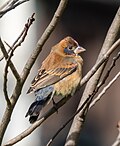
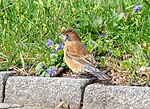
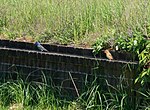
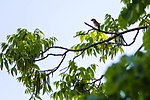







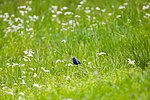
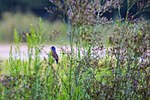




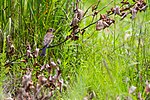
Recent Comments